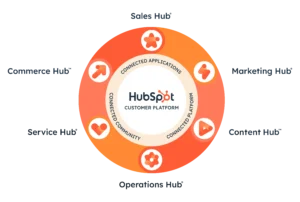In today’s fast-paced development world, efficiency is paramount. One effective way to streamline development and reduce redundant work is by leveraging API response components. These components are reusable chunks of data that can be extracted from API responses and integrated into various parts of your application. By breaking down complex responses into smaller, manageable components, you can significantly improve your development workflow.
Understanding API Response Components
An API response component is a specific piece of data extracted from an API response. It can be a simple value, such as a user’s name or email address, or a more complex structure, such as a list of products or a detailed user profile. By identifying and isolating these components, you can reuse them across different parts of your application.
Benefits of Utilizing API Response Components
- Increased Efficiency:
- Reduced Development Time: By reusing components, you can significantly reduce the time it takes to develop new features.
- Improved Code Maintainability: A modular approach makes your codebase easier to understand, maintain, and update.
- Enhanced Consistency:
- Standardized Data: By using the same components across different parts of your application, you ensure data consistency.
- Reduced Errors: Fewer errors are likely to occur when using standardized components.
- Improved Scalability:
- Scalable Components: Reusable components can be easily scaled to accommodate growing user bases and increasing data volumes.
- Flexible Architecture: A modular architecture based on components promotes scalability and flexibility.
Best Practices for Utilizing API Response Components
- Identify Reusable Components:
- Analyze API responses to identify common data structures and patterns.
- Break down complex responses into smaller, more manageable components.
- Create Component Libraries:
- Organize components into a centralized library or repository.
- Categorize components based on their functionality or data type.
- Document each component’s purpose, usage, and expected input/output.
- Utilize Data Mapping:
- Map API response data to your application’s data models.
- Use data mapping techniques to transform and normalize data as needed.
- Implement Caching Strategies:
- Cache frequently used components to reduce API calls and improve performance.
- Implement appropriate caching mechanisms, such as browser caching, server-side caching, or a dedicated caching service.
- Test Thoroughly:
- Test each component individually to ensure it functions correctly.
- Integrate components into your application and test them in various scenarios to identify potential issues.
Real-World Examples
- E-commerce Application:
- Product Component: Contains product ID, name, price, description, and image URL.
- User Component: Contains user ID, name, email address, and shipping address.
- Order Component: Contains order ID, date, total amount, and a list of product components.
- Social Media Application:
- User Profile Component: Contains user ID, name, profile picture, bio, and follower/following count.
- Post Component: Contains post ID, content, timestamp, author, and likes/comments count.
Conclusion
By effectively utilizing API response components, you can significantly enhance your development workflow, improve code quality, and reduce time to market. By following the best practices outlined in this article, you can unlock the full potential of API response components and build more efficient and scalable applications.




